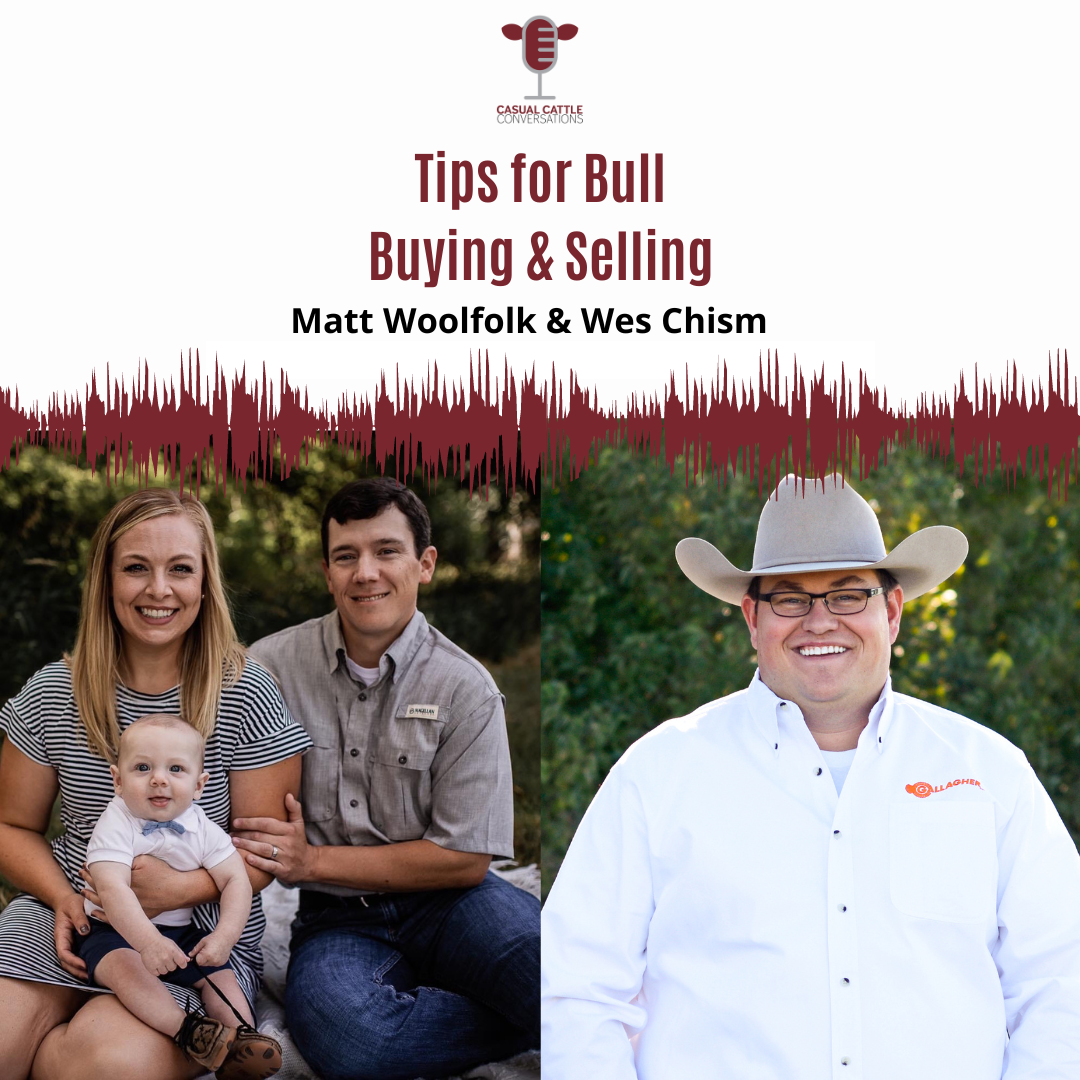Tips for Bull Buying and Selling

Question of the Week: What bull is right for you?
Bull shopping season is upon us and in full swing. As you sort through catalogs in search of your next herd sire, I’d encourage you to think about exactly what the goals of your operation are, and which traits need to be improved in your herd to get there faster. Here are a few questions to ponder.
- Are you looking for more growth or do you need calving ease for your heifers?
- How are you selling these calves?
- Who is buying them?
- When are you selling them?
- What traits matter to your buyer?
Whether you knew the answers to these right off the bat or spent some time thinking about them. It is important to realign with your goals and stay on target.
Tips for Bull Buying & Selling
Matt Woolfolk and Wes Chism join the podcast to share their experiences in the seedstock industry and what they see working and not working for both seedstock suppliers and commercial cattlemen. Woolfolk and Chism take the time to discuss where to have your priorities when you are buying bulls as well as tips for those selling bulls too. This episode covers bull selection, budgeting, customer service, sale formats and even some opinions on what makes a good sale day meal.
Tips for Bull Buying
Unless you are going to AI 100% of your herd or put embryos in all of your cows, you will need to have a bull on your place to get the job done. But, where do you start and how much do you pay? Let’s start with selecting bulls. Start with phenotype. Bulls need to be structurally sound and appealing to you. After that, you can look at EPDs, indices, pedigrees and other data points that matter to you. How do you determine what matters to you? You need to understand the goals of your operation and what the specific purpose of the bull is. Are you buying a bull to breed heifers or cows? How will you be marketing their progeny? Are you selling bred heifers, steers, terminal heifers, bulls or retaining females? Knowing your goals and how your next bull purchase will help you achieve those will give you a sound starting point for selecting your next herd sire.
Now, what about the bull budget? Woolfolk says that the old rule of thumb was you could spend the price of 5 feeder calves on one bull. However, he challenges that rule of thumb and reminds cattle producers to adjust that accordingly if they are selling bred heifers or have different goals. Chism also chimes in and reminds cattle producers to have realistic expectations for the bulls they are buying and the price they will go for. Everyone wants a bull that will do it all, but those bulls are naturally going to be towards the top end of sales. Be real about what you can afford, and which bulls will still move your herd forward.
Tips for Selling Bulls
What types of bulls do commercial producers want? Woolfolk owns and operates MRW Cattle Resources in addition to raising cattle and helps seedstock suppliers understand which traits and bloodlines their clients are looking for. He notes that bulls that look good phenotypically will always rise to the top. Chism also shares that now more than ever producers are looking for efficient bulls that fit their environment. It is simply a necessity. Outside of the quality of bulls, customer service is what truly keeps people coming back. This looks different for each operation and you need to know what you can afford, but find ways to serve your customers after they purchase a bull. This may look like free delivery to a certain point, breeding season guarantees or taking the time to call your customers and ask how the bull is working for them.
When it comes to sale location and format, that is entirely up to you. Woolfolk and Chism have differing opinions on having 100% video sales vs. running bulls through the ring. Know your buyers and know how to help them see the value of your bulls. Another sale day tip is to remember that the meal matters! Barbecue sandwiches and roast beef are common, so don’t be afraid to mix it up or add a side that’s different from other sale day meals. Your auctioneers, ring men and breed association representatives always appreciate something different.
At the end of the day, there are a lot of factors to consider for both bull buyers and sellers. Remember to know what your goals are for your operation and to build solid relationships with those you are buying bulls from or selling bulls to. Happy bull sale season! 







